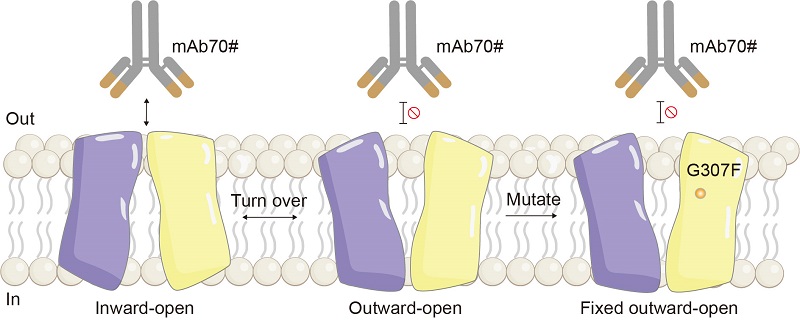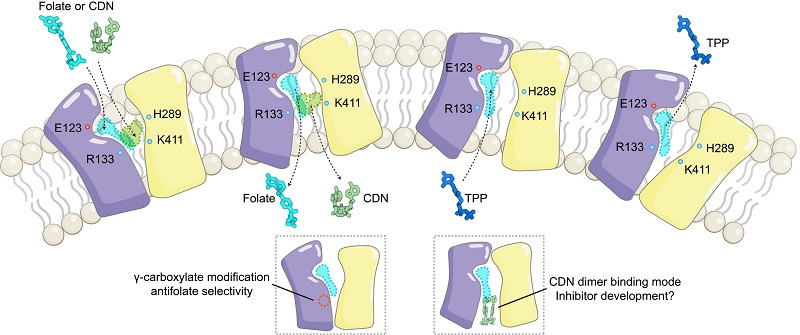Scientists Unveil Complete Mechanism of SLC19A1 Transporting CDNs, Folates, and Antifolates
SLC19A1 is best known for its role in carrying essential nutrients such as folate, as well as antifolate chemotherapy drugs like methotrexate. Recent studies have also revealed that SLC19A1 transports cyclic dinucleotides (CDNs), small signaling molecules that help activate broad downstream immune responses. The dual role of SLC19A1 in folate/antifolate and CDN transport underscores its significance in fundamental metabolism, infection, immunopathology, cancer chemotherapy, and immunotherapy. However, until now, the details of how SLC19A1 recognizes and transports these diverse molecules remained a mystery.
On April 2, 2025, a joint research team from the Institute of Biophysics, Chinese Academy of Sciences, and Beijing Institute of Technology published a study in Nature Communications, unveiling the conformational changes, substrate specificity, and precise molecular mechanism underlying the transport of CDNs, folates, and antifolates by SLC19A1.
To address the inherent preference of purified SLC19A1 samples for the inward-open conformation, the researchers developed an innovative antibody-assisted screening strategy for conformationally locked mutants. Using a previously identified inward-open specific antibody, they efficiently screened for the G307F mutant via flow cytometry, successfully stabilizing the protein in the outward-open conformation (Figure 1).
Building on this breakthrough, the team resolved the structures of SLC19A1 in the outward-open state, both in the absence of substrates and in complex with various ligands. These included reduced folate (5-MTHF), multiple antifolates (MTX and PT523), the effluxed coupling anion (TPP), and a synthetic CDN therapeutic agent (2'3'-CDAS).
Through comparative analysis with the inward-open structure and validation with mutant assays, the researchers identified key amino acid residues involved in conformational transitions. In the outward-open state, both folates and antifolates bind as monomers within the central, canonical substrate pocket of SLC19A1. However, differing from the dimeric binding mode observed in the inward-open conformation, CDNs bind as monomers in the canonical outward-open pocket.
Despite certain chemical similarities between folates and CDNs - and their shared binding pocket - their interaction patterns with SLC19A1 are markedly distinct (Figure 2). Systematic mutational analysis revealed that mutations of CDN-specific interacting residues significantly impaired CDN transport without affecting folate uptake, providing a theoretical foundation for the future design of substrate-selective inhibitors.
Furthermore, the study showed that the N-terminal domain of SLC19A1 forms a unique pocket that precisely accommodates the special γ-carboxylate modification present in the novel antifolate PT523. This interaction interface lays a molecular foundation for the development and optimization of next-generation antifolate drugs.
This research not only deepens our understanding of the mechanisms governing multi-substrate transporters but also offers valuable molecular insights for the development of SLC19A1-targeted immunomodulatory therapies and precision antifolate treatments. Additionally, the dimeric binding mode of CDN in the inward-open conformation presents a promising avenue for the design of specific SLC19A1 inhibitors (Figure 2).

Figure 1. Antibody-assisted screening of outward-open mutants

Figure 2. Schematic diagram of SLC19A1 substrate transport
(Image by GAO Pu's group)
Article link: https://www.nature.com/articles/s41467-025-58378-1
Contact: GAO Pu
Institute of Biophysics, Chinese Academy of Sciences
Beijing 100101, China
E-mail: gaopu@ibp.ac.cn
(Reported by Prof. GAO Pu's group)

